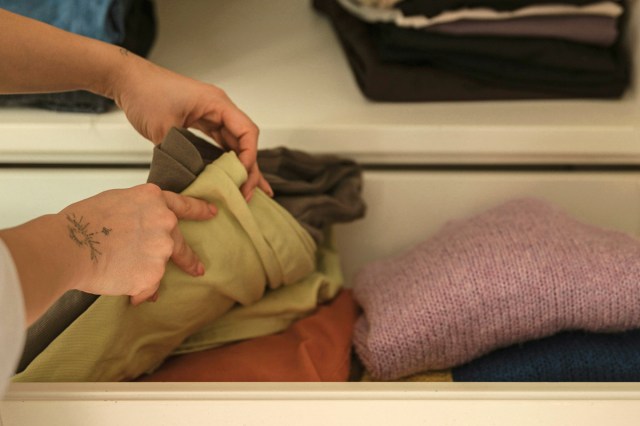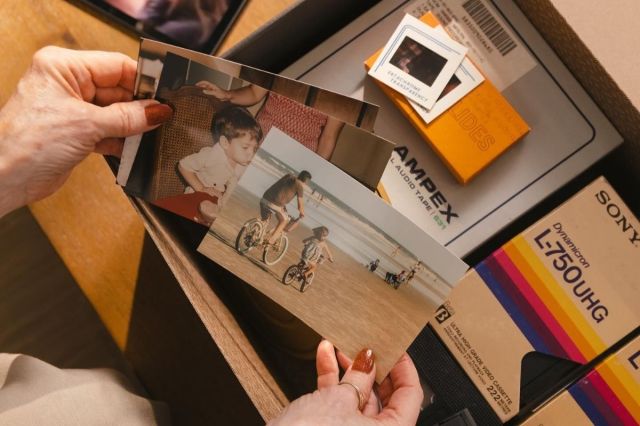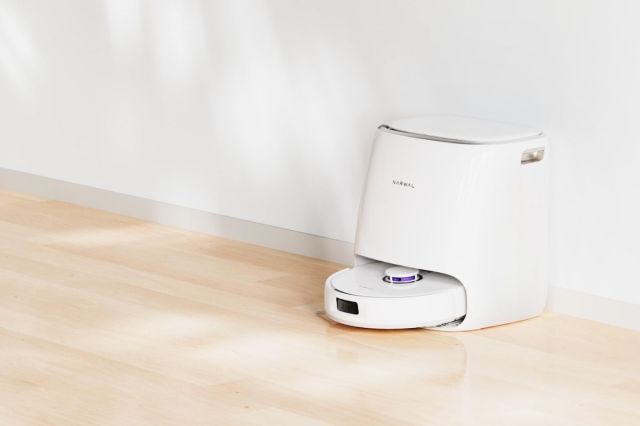Decluttering your closet can feel like a never-ending task, one that’s not at all enjoyable. Between needing different clothes for work, working out, and special occasions, it makes sense why there are so many full hangers and packed drawers. And when you factor in how easy it is to get new shoes or accessories with next-day shipping… well, it’s no surprise that most of us have an overflowing closet. On average, Americans buy 68 new clothing items per year, and while a lot goes into our closets, there’s a good chance less is leaving to make room. That’s where the 90/90 organizing rule comes in — and may just help you sort through that backlog of old clothes in record-breaking time.

What is the 90/90 Rule?
Nearly every organizing pro has their own recommended strategies for getting your belongings in order. Some of these — like the famed KonMari Method — come with a rigid set of guidelines, telling you which items to sort through first and the process for emotionally letting go before dropping your discards in the donation bin. The 90/90 rule may be the opposite; it was created by organizing aficionados but is much less rigid. Minimalism influencers Joshua Fields Millburn and Ryan Nicodemus coined the idea, which simply requires you to think about the last time you wore or used an item. Removing it from your wardrobe is the way to go if it hasn’t left the closet in 90 days and likely won’t be used within the next 90 days. That’s it.

Here’s Why the 90/90 Rule Works
The 90/90 rule is pretty simple at its core: things we aren’t using (or plan to use anytime soon) take up room in our homes and closets, and clearing them out reduces clutter. But getting rid of too-small jeans or your favorite old shirt isn’t easy. Some psychologists believe it’s because we feel that those jeans could fit again one day, or that letting go of old clothes is like discarding our past selves. The 90/90 rule can bypass some of the emotional hang-ups we experience when thinning down our apparel. Asking, “Have I worn this in the last 90 days? Will I wear it in the next three months?” makes it a little easier to envision the life we’re currently living and working toward, and disconnect from an item that’s been lingering on a hanger for far too long.

Can You Adjust The 90/90 Rule?
The decluttering idea isn’t absolute — the two creators recommend adjusting it to fit your needs and lifestyle. In some cases, a six-month span of time isn’t really reflective of how often you use an item — such as heavy winter coats or summer swimwear. In this case, it’s best to adjust the 90/90 rule to reflect the time of year when that apparel item is needed; for example: “Will I wear this coat this coming winter?” The 90/90 rule also doesn’t consider sentimental apparel like wedding attire or heirloom accessories (say, grandma’s pearl necklace). Deciding to keep or let go of these items is a hefty emotional undertaking that can’t be easily answered with the 90/90 rule’s questions. In these situations, many professional organizers instead point to determining how you feel about the item, whether you’re interested in storing it in a way that allows you to enjoy it, or rehoming it to a family member who may find the item just as meaningful.
Reader Favorites

The Perks of Having a Simplified Closet
Decluttering your wardrobe isn’t only about reclaiming space in your home — it can also reduce the mental fatigue that comes with digging through a packed closet, yet feeling like you have nothing to wear. Wading through cluttered spaces can increase stress levels; on the flip side, organized spaces actually boost your mood and can even hone your focus, letting you enjoy (and easily dress for) the more important things in life.
More From Our Network
Better Report is part of Inbox Studio, which publishes content that uplifts, informs, and inspires.

















